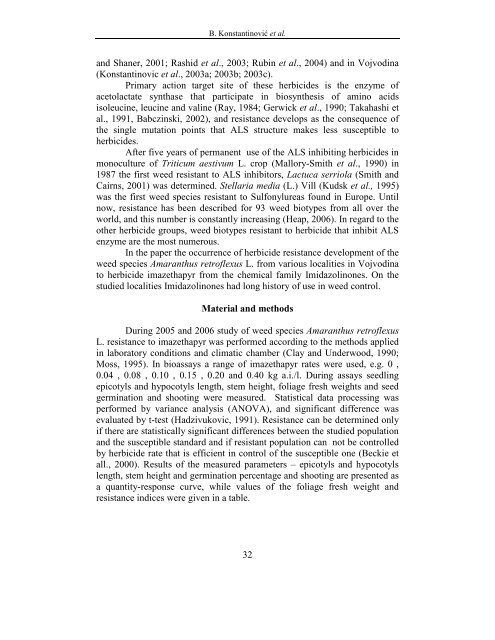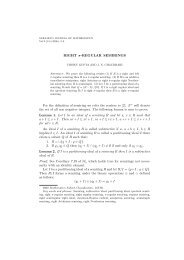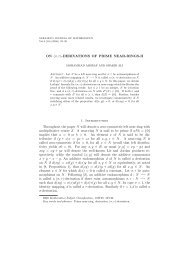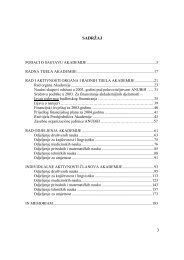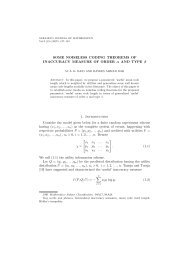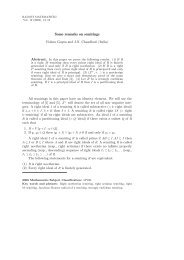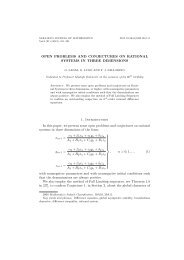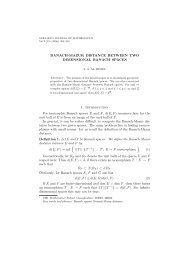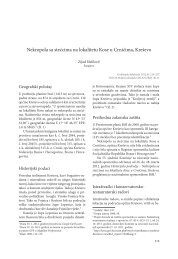HERBOLOGIA - anubih
HERBOLOGIA - anubih
HERBOLOGIA - anubih
Create successful ePaper yourself
Turn your PDF publications into a flip-book with our unique Google optimized e-Paper software.
B. Konstantinović et al.<br />
and Shaner, 2001; Rashid et al., 2003; Rubin et al., 2004) and in Vojvodina<br />
(Konstantinovic et al., 2003a; 2003b; 2003c).<br />
Primary action target site of these herbicides is the enzyme of<br />
acetolactate synthase that participate in biosynthesis of amino acids<br />
isoleucine, leucine and valine (Ray, 1984; Gerwick et al., 1990; Takahashi et<br />
al., 1991, Babczinski, 2002), and resistance develops as the consequence of<br />
the single mutation points that ALS structure makes less susceptible to<br />
herbicides.<br />
After five years of permanent use of the ALS inhibiting herbicides in<br />
monoculture of Triticum aestivum L. crop (Mallory-Smith et al., 1990) in<br />
1987 the first weed resistant to ALS inhibitors, Lactuca serriola (Smith and<br />
Cairns, 2001) was determined. Stellaria media (L.) Vill (Kudsk et al., 1995)<br />
was the first weed species resistant to Sulfonylureas found in Europe. Until<br />
now, resistance has been described for 93 weed biotypes from all over the<br />
world, and this number is constantly increasing (Heap, 2006). In regard to the<br />
other herbicide groups, weed biotypes resistant to herbicide that inhibit ALS<br />
enzyme are the most numerous.<br />
In the paper the occurrence of herbicide resistance development of the<br />
weed species Amaranthus retroflexus L. from various localities in Vojvodina<br />
to herbicide imazethapyr from the chemical family Imidazolinones. On the<br />
studied localities Imidazolinones had long history of use in weed control.<br />
Material and methods<br />
During 2005 and 2006 study of weed species Amaranthus retroflexus<br />
L. resistance to imazethapyr was performed according to the methods applied<br />
in laboratory conditions and climatic chamber (Clay and Underwood, 1990;<br />
Moss, 1995). In bioassays a range of imazethapyr rates were used, e.g. 0 ,<br />
0.04 , 0.08 , 0.10 , 0.15 , 0.20 and 0.40 kg a.i./l. During assays seedling<br />
epicotyls and hypocotyls length, stem height, foliage fresh weights and seed<br />
germination and shooting were measured. Statistical data processing was<br />
performed by variance analysis (ANOVA), and significant difference was<br />
evaluated by t-test (Hadzivukovic, 1991). Resistance can be determined only<br />
if there are statistically significant differences between the studied population<br />
and the susceptible standard and if resistant population can not be controlled<br />
by herbicide rate that is efficient in control of the susceptible one (Beckie et<br />
all., 2000). Results of the measured parameters – epicotyls and hypocotyls<br />
length, stem height and germination percentage and shooting are presented as<br />
a quantity-response curve, while values of the foliage fresh weight and<br />
resistance indices were given in a table.<br />
32


